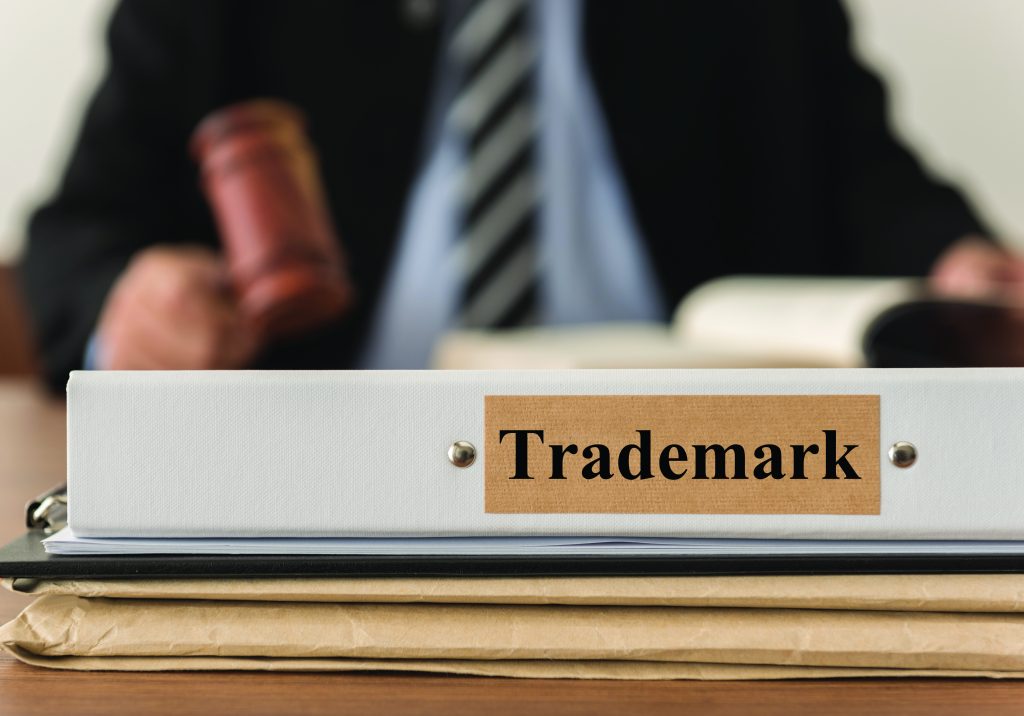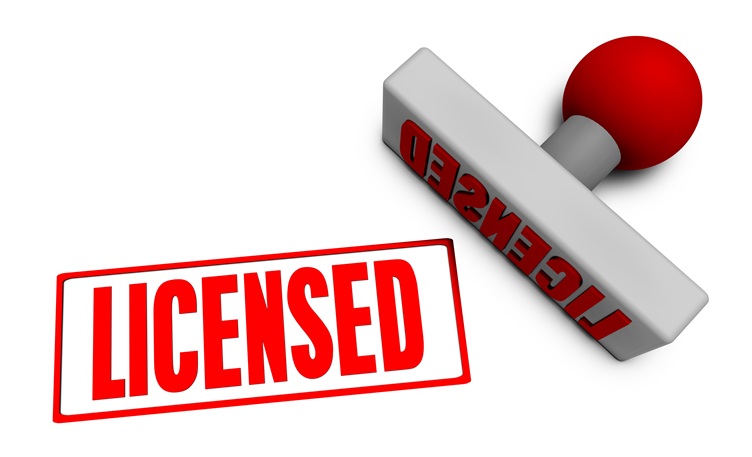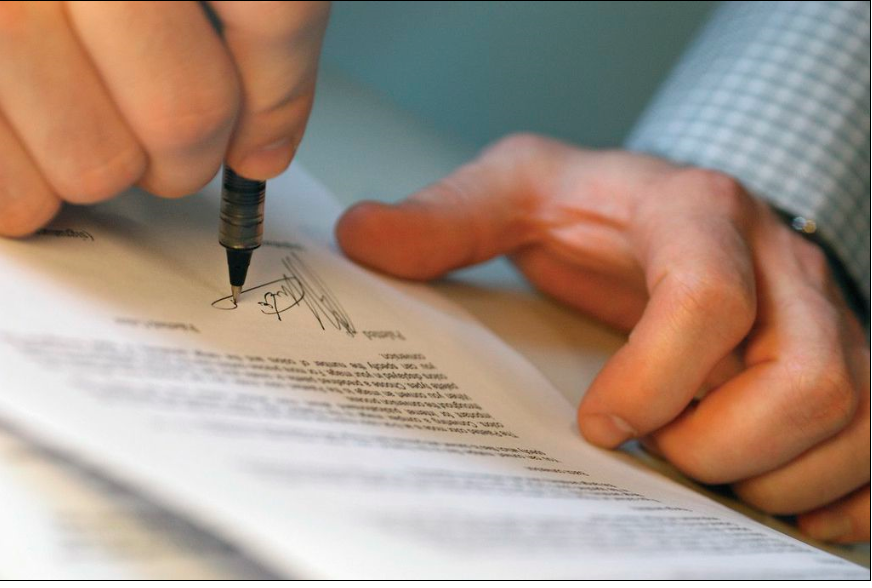OEM Industry
By China IPR SME Helpdesk
 ķÜÅńØĆÕģ©ńÉāÕī¢ń©ŗÕ║”ńÜäµÅÉÕŹć’╝īÕĢåÕōüńÜäńö¤õ║¦ÕłČõĮ£ÕÅ»õ╗źÕ£©Õģ©ńÉāõ╗╗õĮĢõĖĆõĖ¬ÕøĮÕ«ČĶ┐øĶĪīÕ╣ČķöĆÕŠĆÕøĮķÖģõĖŖõ╗╗õĮĢõĖĆÕżäÕ£░Õī║ŃĆéõĖ║õ║åĶŖéń£üõ║║ÕŖøńē®ÕŖøńŁēÕ╝Ƶö»’╝īõĖŹÕ░æÕż¦Õ×ŗõ╝üõĖÜķāĮķĆēµŗ®OEMńÜäńö¤õ║¦ÕĮóÕŖ┐’╝īÕŹ│µēŠÕĤզŗĶ«ŠÕżćńö¤õ║¦ÕĢåĶ┐øĶĪīõ╗ŻÕĘźńö¤õ║¦ŃĆéOEM(Original Equipment Manufacturer)µś»ÕÅŚµēśÕÄéÕĢåµīēµØźµĀĘÕÄéÕĢåõ╣ŗķ£Ćµ▒éõĖĵijµØā’╝īµīēńģ¦ÕÄéÕ«Čńē╣Õ«ÜńÜäµØĪõ╗ČĶĆīńö¤õ║¦ŃĆéµēƵ£ēńÜäĶ«ŠĶ«ĪÕøŠńŁēķāĮÕ«īÕģ©õŠØńģ¦µØźµĀĘÕÄéÕĢåńÜäĶ«ŠĶ«ĪµØźĶ┐øĶĪīÕłČķĆĀÕŖĀÕĘźŃĆéńö¤õ║¦ĶĆģõĖŹńø┤µÄźńö¤õ║¦õ║¦Õōü’╝īĶĆīµś»Õł®ńö©Ķć¬ÕĘ▒µÄīµÅĪńÜä"Õģ│ķö«ńÜäµĀĖÕ┐āµŖƵ£»"’╝īĶ┤¤Ķ┤ŻĶ«ŠĶ«ĪÕÆīÕ╝ĆÕÅæŃĆüµÄ¦ÕłČķöĆÕö«"µĖĀķüō"’╝īÕģĘõĮōńÜäÕŖĀÕĘźõ╗╗ÕŖĪõ║żń╗ÖÕł½ńÜäõ╝üõĖÜÕÄ╗ÕüÜŃĆéÕøĮÕåģõ╣Āµā»ń¦░õĖ║ÕŹÅõĮ£ńö¤õ║¦ŃĆüõĖēµØźÕŖĀÕĘź’╝īõ┐Śń¦░ÕŖĀÕĘźĶ┤ĖµśōŃĆéÕ«āµś»ÕøĮķÖģÕż¦Õģ¼ÕÅĖÕ»╗µēŠÕÉäĶ欵»öĶŠāõ╝śÕŖ┐ńÜäõĖĆń¦ŹµĖĖµłÅĶ¦äÕłÖ’╝īĶāĮķÖŹõĮÄńö¤õ║¦µłÉµ£¼’╝īµÅÉķ½śÕōüńēīķÖäÕŖĀÕĆ╝ŃĆéĶ┐Öń¦Źµ¢╣Õ╝ŵś»Õ£©ńöĄÕŁÉõ║¦õĖÜÕż¦ķćÅÕÅæÕ▒ĢĶĄĘµØźõ╗źÕÉĵēŹÕ£©õĖ¢ńĢīĶīāÕø┤ÕåģķĆɵŁźńö¤µłÉńÜäõĖĆń¦ŹµÖ«ķüŹńÄ░Ķ▒Ī’╝īÕŠ«ĶĮ»ŃĆüIBMńŁēÕøĮķÖģõĖŖńÜäõĖ╗Ķ”üÕż¦õ╝üõĖÜÕØćķććńö©Ķ┐Öń¦Źµ¢╣Õ╝ÅŃĆé
ķÜÅńØĆÕģ©ńÉāÕī¢ń©ŗÕ║”ńÜäµÅÉÕŹć’╝īÕĢåÕōüńÜäńö¤õ║¦ÕłČõĮ£ÕÅ»õ╗źÕ£©Õģ©ńÉāõ╗╗õĮĢõĖĆõĖ¬ÕøĮÕ«ČĶ┐øĶĪīÕ╣ČķöĆÕŠĆÕøĮķÖģõĖŖõ╗╗õĮĢõĖĆÕżäÕ£░Õī║ŃĆéõĖ║õ║åĶŖéń£üõ║║ÕŖøńē®ÕŖøńŁēÕ╝Ƶö»’╝īõĖŹÕ░æÕż¦Õ×ŗõ╝üõĖÜķāĮķĆēµŗ®OEMńÜäńö¤õ║¦ÕĮóÕŖ┐’╝īÕŹ│µēŠÕĤզŗĶ«ŠÕżćńö¤õ║¦ÕĢåĶ┐øĶĪīõ╗ŻÕĘźńö¤õ║¦ŃĆéOEM(Original Equipment Manufacturer)µś»ÕÅŚµēśÕÄéÕĢåµīēµØźµĀĘÕÄéÕĢåõ╣ŗķ£Ćµ▒éõĖĵijµØā’╝īµīēńģ¦ÕÄéÕ«Čńē╣Õ«ÜńÜäµØĪõ╗ČĶĆīńö¤õ║¦ŃĆéµēƵ£ēńÜäĶ«ŠĶ«ĪÕøŠńŁēķāĮÕ«īÕģ©õŠØńģ¦µØźµĀĘÕÄéÕĢåńÜäĶ«ŠĶ«ĪµØźĶ┐øĶĪīÕłČķĆĀÕŖĀÕĘźŃĆéńö¤õ║¦ĶĆģõĖŹńø┤µÄźńö¤õ║¦õ║¦Õōü’╝īĶĆīµś»Õł®ńö©Ķć¬ÕĘ▒µÄīµÅĪńÜä"Õģ│ķö«ńÜäµĀĖÕ┐āµŖƵ£»"’╝īĶ┤¤Ķ┤ŻĶ«ŠĶ«ĪÕÆīÕ╝ĆÕÅæŃĆüµÄ¦ÕłČķöĆÕö«"µĖĀķüō"’╝īÕģĘõĮōńÜäÕŖĀÕĘźõ╗╗ÕŖĪõ║żń╗ÖÕł½ńÜäõ╝üõĖÜÕÄ╗ÕüÜŃĆéÕøĮÕåģõ╣Āµā»ń¦░õĖ║ÕŹÅõĮ£ńö¤õ║¦ŃĆüõĖēµØźÕŖĀÕĘź’╝īõ┐Śń¦░ÕŖĀÕĘźĶ┤ĖµśōŃĆéÕ«āµś»ÕøĮķÖģÕż¦Õģ¼ÕÅĖÕ»╗µēŠÕÉäĶ欵»öĶŠāõ╝śÕŖ┐ńÜäõĖĆń¦ŹµĖĖµłÅĶ¦äÕłÖ’╝īĶāĮķÖŹõĮÄńö¤õ║¦µłÉµ£¼’╝īµÅÉķ½śÕōüńēīķÖäÕŖĀÕĆ╝ŃĆéĶ┐Öń¦Źµ¢╣Õ╝ŵś»Õ£©ńöĄÕŁÉõ║¦õĖÜÕż¦ķćÅÕÅæÕ▒ĢĶĄĘµØźõ╗źÕÉĵēŹÕ£©õĖ¢ńĢīĶīāÕø┤ÕåģķĆɵŁźńö¤µłÉńÜäõĖĆń¦ŹµÖ«ķüŹńÄ░Ķ▒Ī’╝īÕŠ«ĶĮ»ŃĆüIBMńŁēÕøĮķÖģõĖŖńÜäõĖ╗Ķ”üÕż¦õ╝üõĖÜÕØćķććńö©Ķ┐Öń¦Źµ¢╣Õ╝ÅŃĆé
õĖŁÕøĮńÜäõ╗ŻÕĘźõ║¦õĖÜõ╗ÄĶ┐ćÕÄ╗ńÜäõ╝Āń╗¤µ£ŹĶŻģń║║ń╗ćĶĪīõĖÜĶ┐ģķƤÕÅæÕ▒ĢÕł░µ▒ĮĶĮ”ķøČķā©õ╗ČķģŹõ╗ČŃĆüÕī¢Õ”åÕōüõ╗źÕÅŖķ½śµ¢░ITĶ«ŠÕżć’╝īõ╗źÕÅŖńöĄÕŁÉĶ«ŠÕżćõ║¦ÕōüńŁē’╝īõĮ£õĖ║õĖ¢ńĢīķóåÕģłń║¦ńÜäÕłČķĆĀÕĢå’╝īõĖŁÕøĮõ╝üõĖÜÕ£©ÕćĀõ╣ĵēƵ£ēńÜäĶĪīõĖÜÕåģķāĮÕÉĖÕ╝Ģõ║åµØźńØƵ¼¦ńŠÄńÜäĶ«ĖÕżÜõĖŁÕ░ÅÕ×ŗõ╝üõĖÜÕ£©ÕøĮÕåģĶ«Šń½ŗÕģ¼ÕÅĖ’╝īÕ╝ĆÕ▒ĢÕÉłõĮ£’╝īÕł®ńö©õĖŁÕøĮńÜäńö¤õ║¦õ╝śÕŖ┐’╝īõ╗źńøĖÕ»╣ĶŠāõĮÄńÜäÕŖ│ÕŖ©ÕŖøµłÉµ£¼ÕÆīń╗Åķ¬īõĖ░Õ»īńÜäńö¤õ║¦ÕĢåµØźńö¤õ║¦ÕÆīÕłČķĆĀõ║¦ÕōüŃĆéÕ░Įń«Īńø«ÕēŹõĖŁÕøĮńÜäń¤źĶ»åõ║¦µØāµ│ĢÕŠŗõ┐صŖżµ¢╣ķØóÕĘ▓ńäČÕ«īÕ¢ä’╝īõĮåõŠĄµØāĶĪīõĖ║õŠØńäČÕÅĖń®║Ķ¦üµā»’╝īÕ▒Īń”üõĖŹµŁó’╝īÕøĀµŁżõ┐صŖżõĖÄõ║¦ÕōüńøĖÕģ│ńÜäń¤źĶ»åõ║¦µØāµś»µłÉÕŖ¤Õ£░µēōÕ╝ĆõĖŁÕøĮõ╗ŻÕĘźÕĖéÕ£║µłśńĢźńÜäÕģ│ķö«µŁźķ¬żŃĆéõĖ║õ║åµø┤ÕźĮńÜäõ┐صŖżĶć¬ÕĘ▒ńÜäÕōüńēīńÜäÕ£©ÕŹÄÕł®ńøŖ’╝īķś▓µŁóõ╗ŻÕĘźõ╝üõĖÜõĖÄĶć¬ÕĘ▒ńÜäÕōüńēīÕć║ńÄ░Õł®ńøŖµæ®µō”µł¢ń¬āÕÅ¢ĶĪīõĖ║’╝īÕ£©õĖŁÕøĮÕÅŖµŚ®µ│©ÕåīÕĢåµĀć’╝īÕ»╣Ķć¬ÕĘ▒ńÜäÕÉłµ│Ģń¤źĶ»åõ║¦µØāĶ┐øĶĪīõ┐صŖżµś»ńøĖÕĮōÕ┐ģĶ”üńÜäŃĆéķÖżõ║åµłæõ╗¼Ķ┐ćÕÄ╗Ķ«▓Ķ┐ćńÜäõĖĆõ║øńö│Ķ»ĘµĄüń©ŗõ╣ŗÕż¢’╝īÕ£©õ╗ŻÕĘźĶĪīõĖÜĶ»Ęõ╗ŻÕĘźÕģ¼ÕÅĖµØźĶ┐øĶĪīńö¤õ║¦ńÜäõ╝üõĖÜ’╝īĶ┐śÕÅ»õ╗źÕÅŚÕł░µĄĘÕģ│õ┐صŖż’╝īõĖŁÕøĮµĄĘÕģ│Õ«śÕæśõ╝ÜĶ░āµ¤źÕĢåÕōüńÜäĶ┐øÕć║ÕóāµĄüÕÉæ’╝īÕ╣ČÕ»╣ÕÅ»ĶāĮĶó½õŠĄµØāõ╝üõĖÜÕÅæÕć║ĶŁ”µŖź’╝īõĖŁÕ░Åõ╝üõĖÜÕÅ»õ╗źµ¤źń£ŗÕÅ»õ╗źĶ┤¦ńē®’╝īńĪ«Ķ«żÕ«āõ╗¼µś»ÕÉ”õŠĄµØā’╝īÕ╣ČĶ”üµ▒éµēŻńĢÖĶ┤¦ńē®’╝īÕ£©õĖĆÕ«Üń©ŗÕ║”õĖŖõ┐صŖżõ║åõ╝üõĖÜÕł®ńøŖŃĆé
Õ£©õĖÄõ╗ŻÕĘźÕÄéÕÉłõĮ£µ¢╣ķØó’╝īķĆÜĶ┐ćµ│©Õåīµ£ēµĢłÕĢåµĀć’╝īõ╝üõĖÜĶ┐śÕÅ»õ╗źÕÉæõ╗ŻÕĘźÕĘźÕÄéµÄłõ║łĶ«ĖÕÅ»Ķ»ü’╝īÕÅ¢ÕŠŚĶ«ĖÕÅ»Ķ»üńÜäõ╗ŻÕĘźÕĘźÕÄé’╝īÕ░åµ£ēµø┤ÕżÜµØāńøŖ’╝īõ╣¤µ£ēµø┤Õż¦ńÜäÕŖ©ÕŖøÕÄ╗Õ»╣õ╗śÕģČõ╗¢ńÜäķĆĀÕüćĶĆģŃĆ鵣żÕż¢’╝īõ╗ÄÕłøõĮ£õ║¦ÕōüŃĆüĶ«ŠĶ«ĪÕ╝ĆÕ¦ŗ’╝īõĖŁÕøĮńÜäµ│ĢÕŠŗÕ░▒ÕÅ»õ╗źÕ»╣õ║¦ÕōüńÜäńēłµØāĶ┐øĶĪīõ┐صŖż’╝īķéŻõ║øķĆÜĶ┐ćõ╗ŻÕĘźÕÄéńö¤õ║¦õ║¦ÕōüńÜäÕģ¼ÕÅĖÕÅ»õ╗źµ£ēĶĄäµĀ╝ĶÄĘÕŠŚńēłµØāõ┐صŖż’╝īĶÖĮńäČńēłµØāµś»Ķć¬ÕŖ©µÄłõ║łńÜä’╝īõĮåµś»ÕĮōÕÅæńö¤ń║Āń║ĘĶĪīõĖ║µŚČÕÅ»õ╗źÕŹĀµŹ«õĖ╗ÕŖ©ŃĆ鵣żÕż¢õĖ║õ║åķü┐ÕģŹõĖĆõ║øµ«ŗµ¼ĪÕōüµĄüÕÉæÕĖéÕ£║’╝īõ╝üõĖÜÕ║öÕĮōĶ”üµ▒éÕĆÖķĆēńÜäõ╗ŻÕĘźÕĘźÕÄéńŁŠńĮ▓õĖĆõ╗Įõ┐ØÕ»åÕŹÅĶ««’╝īõ╗źõ┐ØĶ»üÕĢåõĖÜĶ«ĪÕłÆÕÆīõ║¦Õōüõ┐Īµü»’╝īÕ£©Õ»╣Ķ»Øµł¢ńöĄÕŁÉķé«õ╗ČķōŠµÄźõĖŁõĖŹĶó½µŖ½ķ£▓ńÜäŃĆéõĮåµś»õ┐ØÕ»åÕŹÅĶ««õĖŹµś»õĖ浌ĀõĖĆÕż▒ńÜä’╝īÕ«āÕÅ»ĶāĮµŚĀµ│Ģķś▓µŁóõ┐Īµü»µ│äķ£▓µł¢ÕĢåµĀćĶó½õŠĄµØāŃĆéÕ£©Ķ┐øÕģźĶ░łÕłżń©ŗÕ║ÅÕēŹ’╝īÕģłÕ£©õĖŁÕøĮµ│©Õåīń¤źĶ»åõ║¦µØā’╝īµ│©ÕåīÕĢåµĀć’╝īõ┐صŖżĶć¬Ķ║½ń¤źĶ»åõ║¦µØā’╝īµś»ķü┐ÕģŹõ║¦ńö¤Ķ┐Öõ║øķŚ«ķóśńÜäÕģ│ķö«µŁźķ¬żŃĆéÕÅ”Õż¢’╝īÕ£©õĖŁÕøĮ’╝īĶó½Ķ«ĖÕÅ»õ╗ŻÕĘźńÜäõ╗ŻÕĘźÕĘźÕÄé’╝īĶó½Ķ«żõĖ║Õ£©µĢ┤õĖ¬ÕĢåõĖÜńÄ»ĶŖéõĖŁµ£ēÕł®Õ«│Õģ│ń│╗’╝īÕøĀµŁżÕÅ»õ╗źÕ»╣õŠĄµØāĶĆģķććÕÅ¢ĶĪīÕŖ©’╝īµēĆõ╗ź’╝īõ╗ŻÕĘźÕÄéµ£ēĶ┤Żõ╗╗ÕÆīµØāÕł®Ķ░āµ¤źÕĖéÕ£║õĖŖńÜäÕüćĶ┤¦µł¢õ╝¬ÕŖŻõ║¦Õōü’╝īÕ╣ČķććÕÅ¢Õ┐ģĶ”üńÜäĶĪīÕŖ©ŃĆé
 The term Original Equipment Manufacturer (ŌĆśOEMŌĆÖ) is used to describe a company that only makes a part of a product, or a subsystem, to be used in another company's end product. The extension also designates the agreement whereby one company commissions another to manufacture products according to certain specifications and to affix a trade mark on such products. The said products are delivered to the commissioner who sells them in the market under his own name. The letters ŌĆśOEMŌĆÖ therefore denote both the manufacturer and the act of commissioning the finished product to a third party.
The term Original Equipment Manufacturer (ŌĆśOEMŌĆÖ) is used to describe a company that only makes a part of a product, or a subsystem, to be used in another company's end product. The extension also designates the agreement whereby one company commissions another to manufacture products according to certain specifications and to affix a trade mark on such products. The said products are delivered to the commissioner who sells them in the market under his own name. The letters ŌĆśOEMŌĆÖ therefore denote both the manufacturer and the act of commissioning the finished product to a third party.
ChinaŌĆÖs OEM sector developed rapidly from its roots in the apparel industry to a sector comprising of automotive parts, cosmetics, and ICT equipment. As the worldŌĆÖs leading manufacturer, China attracts manufacturing contracts from global customers, including many European SMEs, in almost every industry by capitalising on Chinese OEMŌĆÖs core strengths - relatively low labour costs, experienced manufacturers, and skilled workers.
Even though ChinaŌĆÖs IPR laws and regulations have improved over the past years, IP infringements are still commonplace in the country and thus protection of intellectual of property rights related to the goods is a crucial element of a successful Chinese OEM strategy.

Protect your Trade Mark
In order to enjoy trade mark protection in China, SMEs need to register their trade mark. China follows a first-to-file system that grants trade marks to the first individual or company to register it. Thus, a foreign trade mark is not automatically protected in China, and vice versa. Before considering OEM production in China and certainly before beginning the OEM process, SMEs should file all trademarks with Chinese authorities either directly in China or through international processes ( through Madrid Agreement). Once the trade mark is registered with China Trade Mark Office (CTMO), SMEs can authorise the OEM factory to begin work safely. In case the trade mark is not registered before the production process begins then SMEs leave themselves vulnerable to IP piracy.
 With a valid trade mark registration, SMEs can:
With a valid trade mark registration, SMEs can:
ŌĆó Grant a license to the OEM factory. Whether the license is ŌĆśexclusiveŌĆÖ (others cannot use the trade mark in China for as long as the contract lasts), ŌĆśsoleŌĆÖ (only the licensee and SME can use it) or ŌĆśnormalŌĆÖ (i.e., nonexclusive) depends on the negotiations and SMEsŌĆÖ trust in the factory. Generally, a non-exclusive license is slightly safer as it allows more freedom for terminating a contract and switching to a different factory. On the other hand, the OEM will have more power and more incentive to act against possible counterfeiters if it has an exclusive license.
ŌĆó Record the trademark with the General Administration of Customs (GAC ŌĆō China Customs) and benefit from the Custom's ex officio protection system, whereby officers survey the inbound and outbound flow of merchandise and warn SMEs of any suspicious shipments. After the warning has been issued, the SME has three days to confirm whether it is an infringement and ask for detention of goods.
ŌĆó Take enforcement measures against trade mark infringement. Only registered trademarks enjoy the exclusive right to prevent others from using, manufacturing, selling, storing, etc. products bearing identical or similar marks on identical or similar products without authorisation. The trade mark owner can either file an administrative complaint with the local Administration of Industry and Commerce (AIC) or file a lawsuit before the PeopleŌĆÖs Court. In general, administrative actions are time and cost-effective, in particular if SMEs have a straightforward case. For complicated scenarios, or if you are seeking damages, using the courts is a better method.
In order to remain valid, a trade mark must be used. If not used for more than three consecutive years, the mark can be revoked. The OEM need only affix the trade mark to protect it from being revoked for non-use. In order to emphasize the function of trade mark, the revised Trademark Law stipulates that the use of trade marks consists in "affixing trademark on goods, packages or containers etc. ŌĆ” to distinguish the origin of commoditiesŌĆØ.
DonŌĆÖt forget to register the design
Products manufactured by an OEM factory are usually made in accordance with specific drawings, blueprints etc., provided by the foreign company. It is also advisable to file in advance for registration of design patents in order to protect these industrial designs.
 SMEs should be aware that Chinese law requires that design patents be ŌĆśnovelŌĆÖ, which means the design must not have been disclosed anywhere in the world before the filing of the application. The registration of a design is a pre-condition for enforcing your rights in an event of an infringement. The European concept of unregistered design, which protects the owner for three years even if there is no registration and which allows a legal action against third parties who reproduce a design, does not exist in China.
SMEs should be aware that Chinese law requires that design patents be ŌĆśnovelŌĆÖ, which means the design must not have been disclosed anywhere in the world before the filing of the application. The registration of a design is a pre-condition for enforcing your rights in an event of an infringement. The European concept of unregistered design, which protects the owner for three years even if there is no registration and which allows a legal action against third parties who reproduce a design, does not exist in China.
Copyright is important in the OEM Industry
Chinese law protects copyright from the moment of creation of the product. Some products produced via OEM may qualify for copyright protection, however, in China, standards for receiving copyright protection are quite high.
Although copyright is automatically granted, registration is possible and highly recommended to facilitate the submission of evidence of ownership of the copyright in case of a dispute or enforcement action. Copyright should be registered as early as possible as the courts tend to disregard registrations if they have been made after proceedings have begun. Registration of a copyright is a simple and low-cost procedure with the Copyright Protection Centre of China. Proving ownership of the copyright is crucial and will require preservation of original copies of all documents establishing the creation of the work (e.g. sketches, drafts, and various prior iterations of the work) as well as contractual documents showing the chain of ownership over the rights.
 Use contracts to protect your IP
Use contracts to protect your IP
OEM contracts, like all contracts, need to be properly drafted by legal professionals in order to avoid interpretation issues or omission of important points. IP-related clauses should definitely be included and carefully defined in the contract to protect your interests. To ensure these issues are addressed, before signing an OEM contract, some basic questions should be raised and should be discussed between the commissioner and the OEM factory to clarify, for example:
ŌĆó Who owns the prototype produced by the OEM factory based on the design provided by the commissioner?
ŌĆó Who is responsible for final products infringing a third partyŌĆÖs IP (e.g. trade mark, design etc.)?
ŌĆó Handling of certain contingencies, for example if the factory does not destroy returned or flawed products and instead circulates them in market.
 SMEs should require the candidate OEM factory to sign a Non-Disclosure Agreement (NDA) to maintain the secrecy of their business plan and IP information disclosed in conversations or email chains, etc. However, NDAs are not fool-proof and may fail to prevent information leaks or trade mark squatting. Registering IP before entering negotiations, let alone entering China, will be the key to avoid these issues in terms of trade mark and design protection. ItŌĆÖs recommended to ensure the appropriate protection of trade secrets and know-how via contractual and other means.
SMEs should require the candidate OEM factory to sign a Non-Disclosure Agreement (NDA) to maintain the secrecy of their business plan and IP information disclosed in conversations or email chains, etc. However, NDAs are not fool-proof and may fail to prevent information leaks or trade mark squatting. Registering IP before entering negotiations, let alone entering China, will be the key to avoid these issues in terms of trade mark and design protection. ItŌĆÖs recommended to ensure the appropriate protection of trade secrets and know-how via contractual and other means.
In order to mitigate IP risks in OEM contracts, following points should be considered carefully:
 Definition of the commissioned product
Definition of the commissioned product
The definition of the product to be commissioned is a key element of the contract. It is absolutely necessary to define in meticulous detail the products that are to be produced by the OEM factory, including qualities and quantities. Designs or drawings, and in some cases moulds and toolings, should be checked or provided, and validated by the commissioner to confirm that products follow the specifications required.
 Overproduction and defective products
Overproduction and defective products
In case of over-production, the contract should state that production shall be stopped and excess goods or defective goods shall be destroyed at the expense of the OEM factory unless the commissioner gives prior consent to purchase or stock them.
IP use and confidentiality
To prevent unauthorised use, contracts should determine to what extent the OEM factory is authorised to use the IP rights of the commissioner. This should include the use of designs, patents, trademarks and know-how. A monetary penalty for violation of IP restrictions mentioned in the contract is often the best way to mitigate risks and can prevent the circulation of counterfeit or unauthorised products which ruin your brandŌĆÖs reputation and credibility.
IP enforcement
In China, the licensee is considered an "interested partyŌĆØ and, as such, allowed to take action against infringers. Your agreement may specify that the OEM factory has a duty or right to survey the market and to take whatever actions are necessary. However, in an OEM relationship where all products are exported, OEM factories are often not sufficiently proactive and may not monitor the domestic market for infringement.
Termination of the contract
Termination of the contract is a key consideration. The contract must provide post-termination obligations, particularly in relation to inventory liability, continuity of supply, and records retention. For example, tooling disputes are among the most common sources of contention in manufacturing agreements. Manufacturers commonly refuse to return tooling unless compelled to by, for example, a significant lump sum penalty for such a refusal.
 Arbitration vs. domestic courts
Arbitration vs. domestic courts
To resolve disputes between the commissioner and OEM factories, the parties have the choice between local courts and arbitration. To ensure that neutrality will be fully respected, SMEs are advised to choose arbitration. Arbitration centres used could be either abroad or in China. China now has arbitration centres capable of guaranteeing a fair arbitration trial, such as the China International Economic and Trade Arbitration Commission or the Shanghai International Arbitration Commission. Parties involved may also agree on an arbitration centre located outside of China without legal issues as China is a member of the New York Convention and arbitration awards granted by foreign arbitration centres are enforceable in China.